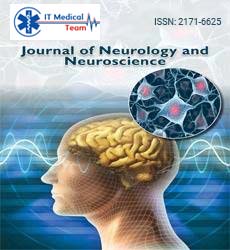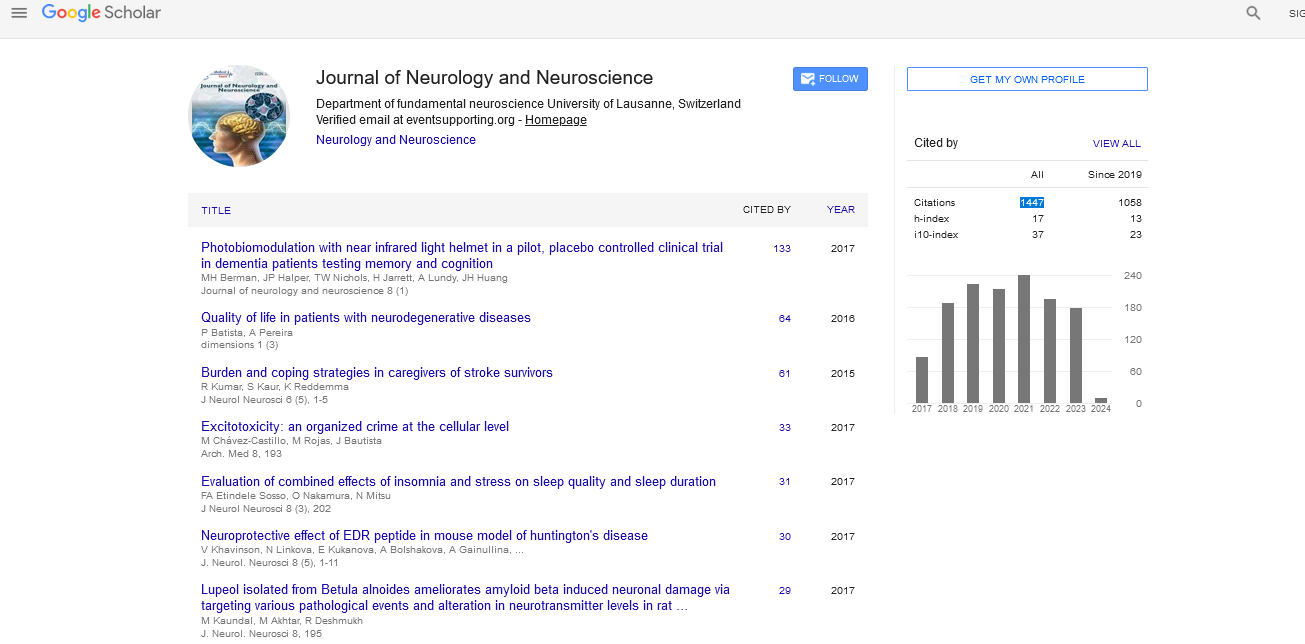Short Communication - (2024) Volume 15, Issue 6
Enhancing atherosclerotic plaque assessment with photon counting computed tomography
Claudio Kelim*
Department of Bioengineering, University of Pisa, Pisa, Italy
*Correspondence:
Claudio Kelim, Department of Bioengineering, University of Pisa, Pisa,
Italy,
Email:
Received: 27-Nov-2024, Manuscript No. ipjnn-25-15498;
Editor assigned: 29-Nov-2024, Pre QC No. P- 15498;
Reviewed: 13-Dec-2024, QC No. Q-15498;
Revised: 18-Dec-2024, Manuscript No. R-15498;
Published:
25-Dec-2024
Abstract
Atherosclerosis, the buildup of plaque within the arteries, is a leading cause of Cardiovascular Disease (CVD) worldwide, contributing to heart attacks, strokes, and peripheral artery disease. Early detection and precise characterization of atherosclerotic plaques are essential for assessing cardiovascular risk and guiding effective treatment strategies. Traditional imaging methods, including conventional X-ray Computed Tomography (CT) and Magnetic Resonance Imaging (MRI), have limitations in providing detailed, accurate information about plaque composition and stability. However, recent advancements in imaging technologies, particularly Photon Counting Computed Tomography (PCCT), have shown great promise in enhancing the assessment of atherosclerotic plaques, offering superior image quality, better plaque characterization, and more reliable risk stratification
INTRODUCTION
Atherosclerosis, the buildup of plaque within the arteries, is a leading cause of Cardiovascular Disease (CVD) worldwide, contributing to heart attacks, strokes, and peripheral artery disease. Early detection and precise characterization of atherosclerotic plaques are essential for assessing cardiovascular risk and guiding effective treatment strategies. Traditional imaging methods, including conventional X-ray Computed Tomography (CT) and Magnetic Resonance Imaging (MRI), have limitations in providing detailed, accurate information about plaque composition and stability. However, recent advancements in imaging technologies, particularly Photon Counting Computed Tomography (PCCT), have shown great promise in enhancing the assessment of atherosclerotic plaques, offering superior image quality, better plaque characterization, and more reliable risk stratification [1]. Atherosclerotic plaques consist of lipid, fibrous tissue, calcium, and other components, and their stability and composition are critical factors in determining the risk of cardiovascular events. The most dangerous plaques are those that are vulnerable or “unstable,” as they have a high likelihood of rupturing and causing blood clots, leading to events like myocardial infarctions or strokes. Plaque characterization involves identifying the presence of these vulnerable regions, such as lipid cores or thin fibrous caps, which are often difficult to visualize with conventional imaging techniques. Traditional imaging modalities like CT angiography (CTA) are widely used in clinical practice for detecting and evaluating atherosclerotic plaques. While these techniques can provide information on the presence and extent of plaque burden, they typically offer limited insight into plaque composition and vulnerability. For example, standard CT images have difficulty distinguishing between different plaque components, such as lipid-rich areas and fibrous tissue, which is crucial for assessing the risk of plaque rupture. Similarly, other imaging techniques like MRI may be limited by their resolution, cost, and availability [2].
DESCRIPTION
PCCT offers significantly higher spatial resolution than traditional CT scans. This enhanced resolution enables the detection of smaller and more intricate details within the arterial walls, allowing for a more accurate representation of plaque morphology and composition. For example, PCCT can reveal the presence of micro-calcifications within plaques, a feature often missed by conventional CT. These micro-calcifications can indicate plaque instability and the potential for rupture, providing crucial information for risk assessment. Moreover, the ability to discriminate 15 (06) 2024 : 001-002 • 2 − © J Neurol Neurosci 1. Roth GA, Johnson C, Abajobir A, et al. Global, regional, and national burden of cardiovascular diseases for 10 causes, 1990 to 2015. J Am Coll Cardiol. 2017; 70(1):1-25. 2. Mathers CD, Loncar D. Projections of global mortality and burden of disease from 2002 to 2030. PLoS Med. 2006; 3(11):e442. 3. Falk E. Pathogenesis of atherosclerosis. J Am Coll Cardiol. 2006; 47(8S):C7-12. 4. Saba L, Agarwal N, Cau R, et al. Review of imaging biomarkers for the vulnerable carotid plaque. JVS-Vascular Science. 2021; 2:149-158. 5. Sandfort V, Persson M, Pourmorteza A, et al. Spectral photoncounting ct in cardiovascular imaging. J Cardiovascular Comput Tomogr. 2021; 15(3):218-225. between different plaque components—such as lipids, fibrous tissue, and calcifications—makes PCCT a valuable tool for evaluating plaque composition in ways that conventional CT cannot. By providing more detailed and precise images of plaque structure, PCCT helps physicians better understand the underlying pathological processes that drive atherosclerosis and its complications. One of the most significant advantages of PCCT is its ability to distinguish between different tissue types based on their X-ray attenuation properties. Using energy spectrum analysis, PCCT can differentiate between soft tissue, such as lipid-rich plaques, and calcified tissue, which is particularly important for characterizing the nature of the plaque. Lipid-rich plaques, which are considered unstable and more prone to rupture, can be identified and monitored more effectively using PCCT, potentially leading to better management and treatment strategies. Moreover, PCCT provides a unique opportunity to assess the degree of calcification in plaques. The presence of calcium in atherosclerotic plaques is associated with plaque stability, but excessive calcification may also indicate advanced disease. By accurately quantifying the calcium content within plaques, PCCT helps provide a more complete picture of plaque composition and the associated risks [3]. Plaque burden refers to the overall extent of atherosclerotic plaque buildup within the arteries. Accurately assessing plaque burden is important for determining the degree of cardiovascular risk and guiding clinical decision-making. With its high-resolution imaging capabilities, PCCT allows for the precise quantification of plaque volume and burden, helping to identify patients who may be at higher risk for cardiovascular events. In addition to visualizing plaque burden, PCCT can also provide information on the progression of atherosclerosis over time. Repeated PCCT scans can be used to track changes in plaque volume and composition, offering valuable insights into the effectiveness of interventions such as statin therapy, lifestyle changes, or surgical procedures. This ability to monitor plaque progression in a non-invasive and detailed manner makes PCCT a powerful tool for personalized cardiovascular care. The potential applications of PCCT in clinical practice for atherosclerotic plaque assessment are vast. One of the most important uses of PCCT is in risk stratification and treatment planning for patients with atherosclerosis. By providing detailed information about plaque composition, stability, and burden, PCCT can help clinicians identify high-risk plaques that are more likely to rupture and cause cardiovascular events. This can inform decisions regarding the need for invasive interventions, such as stenting or bypass surgery, or adjustments to pharmacological therapies, such as the use of statins or antiplatelet agents [4]. Additionally, PCCT has the potential to enhance our understanding of atherosclerosis as a disease process. By enabling more precise and accurate imaging of plaque characteristics, PCCT can be used in research settings to investigate the mechanisms underlying plaque formation, progression, and rupture. This, in turn, could lead to the development of new therapeutic targets and interventions aimed at preventing cardiovascular events in high-risk individuals. As PCCT technology continues to evolve, it is likely that new techniques will emerge to further improve its performance, such as the combination of PCCT with other imaging modalities, like MRI or ultrasound, to provide a more comprehensive assessment of atherosclerosis. Furthermore, the integration of artificial intelligence (AI) and machine learning algorithms into PCCT systems may allow for automated plaque detection and characterization, further enhancing diagnostic accuracy and efficiency [5].
CONCLUSION
Photon counting computed tomography (PCCT) represents a significant advancement in the field of cardiovascular imaging, offering a more detailed, accurate, and non-invasive method for assessing atherosclerotic plaques. With its superior resolution, material-specific imaging capabilities, and reduced radiation exposure, PCCT enhances our ability to characterize plaque composition, assess plaque burden, and evaluate the risk of cardiovascular events. As this technology continues to develop, it has the potential to revolutionize the diagnosis and management of atherosclerosis, improving outcomes for patients at risk of cardiovascular disease.
REFERENCES
<ol>
<li><a name="1" id="1"></a><strong>Roth GA, Johnson C, Abajobir A, et al.</strong> <a href="https://www.jacc.org/doi/abs/10.1016/j.jacc.2017.04.052" target="_blank">Global, regional, and national burden of cardiovascular diseases for 10 causes, 1990 to 2015</a>. <em>J Am Coll Cardiol</em>. 2017; 70(1):1-25.</li>
<p align="right"><a href="https://scholar.google.com/scholar_lookup?title=Global,+Regional,+and+National+Burden+of+Cardiovascular+Diseases+for+10+Causes,+1990+to+2015&author=Roth,+G.A.&author=Johnson,+C.&author=Abajobir,+A.&author=Abd-Allah,+F.&author=Abera,+S.F.&author=Abyu,+G.&author=Ahmed,+M.&author=Aksut,+B.&author=Alam,+T.&author=Alam,+K.&publication_year=2017&journal=J.+Am.+Coll.+Cardiol.&volume=70&pages=1%E2%80%9325&doi=10.1016/j.jacc.2017.04.052&pmid=28527533" target="_blank"><u>Google Scholar</u></a>, <a href="https://doi.org/10.1016/j.jacc.2017.04.052" target="_blank"><u>Crossref</u></a>, <a href="https://www.ncbi.nlm.nih.gov/pubmed/28527533" target="_blank"><u>Indexed at</u></a></p>
<li><a name="2" id="2"></a><strong>Mathers CD, Loncar D.</strong> <a href="https://journals.plos.org/plosmedicine/article?id=10.1371/journal.pmed.0030442&utmsource=example.com&utm_medium=link&utm_compaign=article" target="_blank">Projections of global mortality and burden of disease from 2002 to 2030</a>. <em>PLoS Med</em>. 2006; 3(11):e442.</li>
<p align="right"><a href="https://scholar.google.com/scholar_lookup?title=Projections+of+global+mortality+and+burden+of+disease+from+2002+to+2030&author=Mathers,+C.D.&author=Loncar,+D.&publication_year=2006&journal=PLoS+Med.&volume=3&pages=e442&doi=10.1371/journal.pmed.0030442&pmid=17132052" target="_blank"><u>Google Scholar</u></a>, <a href="https://doi.org/10.1371/journal.pmed.0030442" target="_blank"><u>Crossref</u></a>, <a href="https://www.ncbi.nlm.nih.gov/pubmed/17132052" target="_blank"><u>Indexed at</u></a></p>
</ol>





